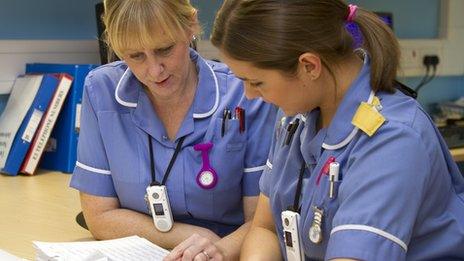Hospitals get guidelines on safe nurse numbers
- Published
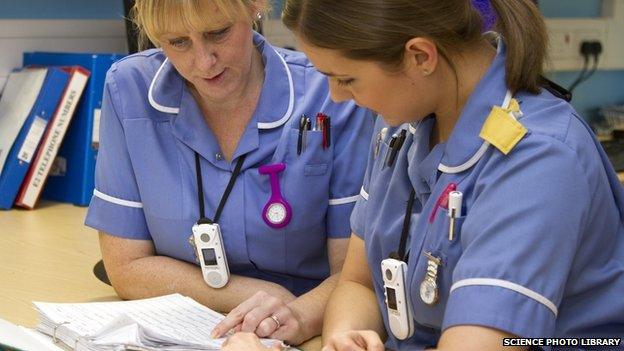
The guidelines say there must be enough nurses to give patients the assistance they need
Hospitals in England are being given strict guidelines on safe staffing levels for nurses - but they stop short of giving absolute minimums.
The National Institute for Health and Care Excellence said having more than eight patients to one nurse on a ward in the day should act as a trigger for checking if care was being compromised.
It also set out a series of "red flag" events that should prompt concern.
The government said the move was a "major step forward".
The guidelines cover problems with basic care such as delays getting pain relief.
Other events include patients not being helped on a visit to the bathroom or not receiving their medication.
Both patients and nurses on wards can raise these. They must then be investigated and explanations provided for what has gone wrong.
'Right level of care'
Prof Gillian Leng, deputy chief executive of the National Institute for Health and Care Excellence (NICE), said: "Safe staffing is more complex than setting a single ratio.
"The emphasis should not just be on the available number of staff, it should be on delivering safe patient care and making sure that hospital management and nursing staff are absolutely clear on best practice to do this.
"The reason why there is no single one-to-eight figure is because that will be seen as the figure that should be applied across all wards where we know that one to eight is not going to be enough in many scenarios.
"A single figure is not appropriate if we want to deliver the right level of care for patients."

Currently it is entirely up to hospitals to set their own nurse staffing levels, but NICE was asked to look at the issue by ministers after it was flagged up by the public inquiry into the Stafford Hospital scandal.
NICE estimated implementing the guidance could cost £200m - about 5% of the cost of employing nurses on hospital wards - although it said that in the long run it would save money through improvements in care.
Peter Carter, general secretary of the Royal College of Nursing, said: "Nursing staff have long recognised the importance of safe staffing levels and consistently provided evidence of the danger to patients where there are too few staff.
"It is good to see that this is now being recognised across the NHS."
Health Secretary Jeremy Hunt said the guidelines were a "major step forward".
"The NHS will be able to give safer care, and patients can have confidence that the right number of nursing staff are on duty."
The guidance also applies to Wales, although it will now be up to ministers there whether it will be applied.
In Scotland, hospitals are already routinely monitoring and publishing staffing levels - although there are no recommended minimums.
The publication of the guidelines comes just a day after the chief inspector of hospitals warned that staffing levels were so low in parts of Stafford Hospital that the loss of one or two key workers would make services unsafe.
Prof Sir Mike Richards said he was "surprised and very concerned". The trust running the hospital is due to be dissolved in November, with responsibility for services to be shared between neighbouring trusts.
- Published15 July 2014
- Published11 March 2014
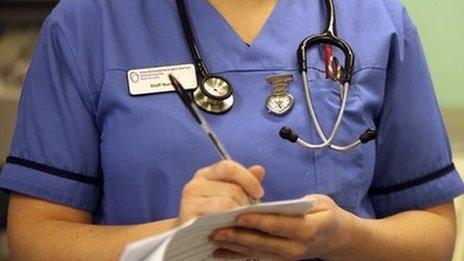
- Published3 March 2014
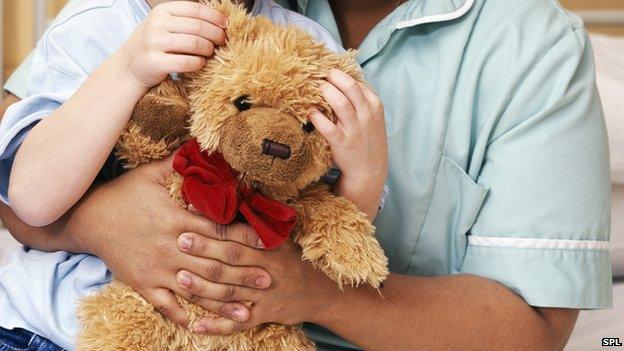
- Published5 February 2014
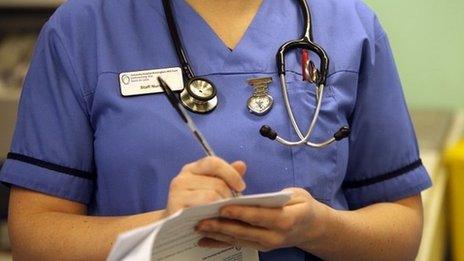
- Published19 November 2013
